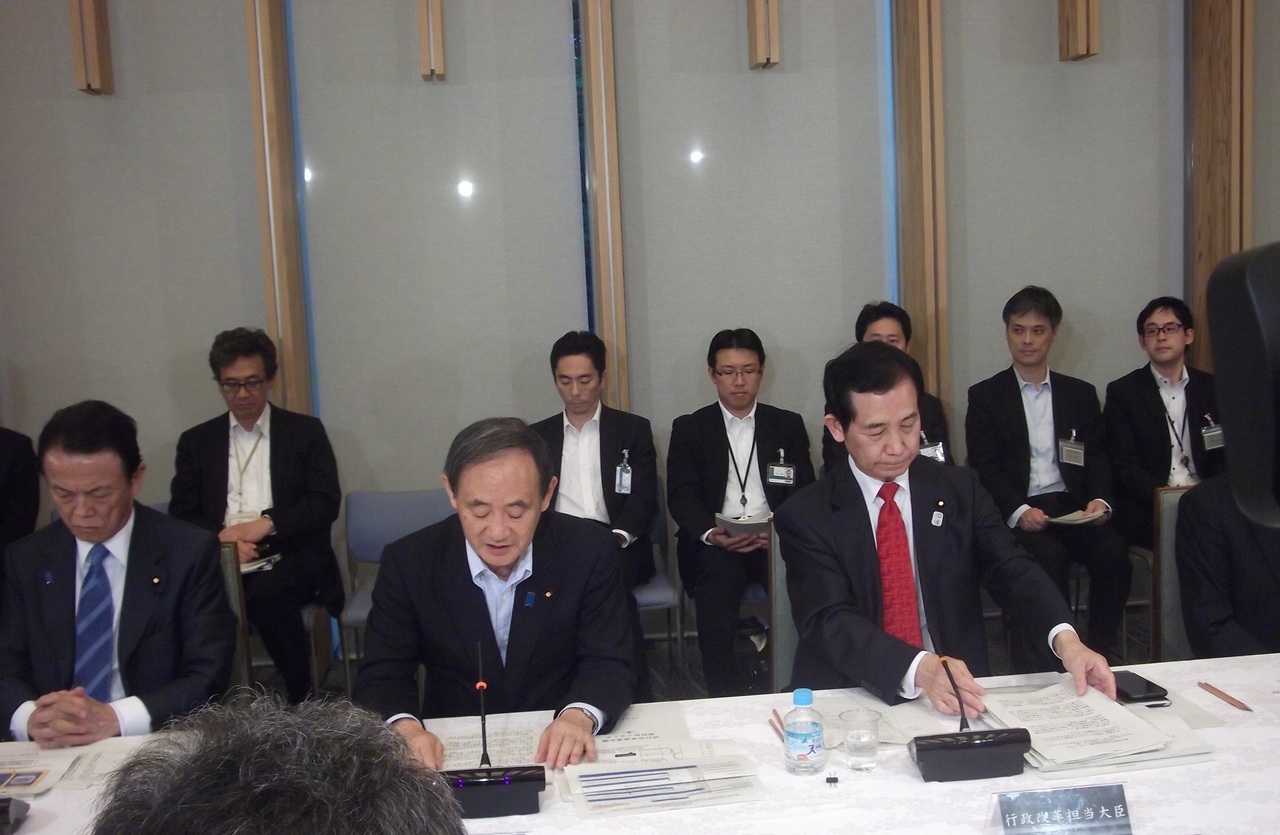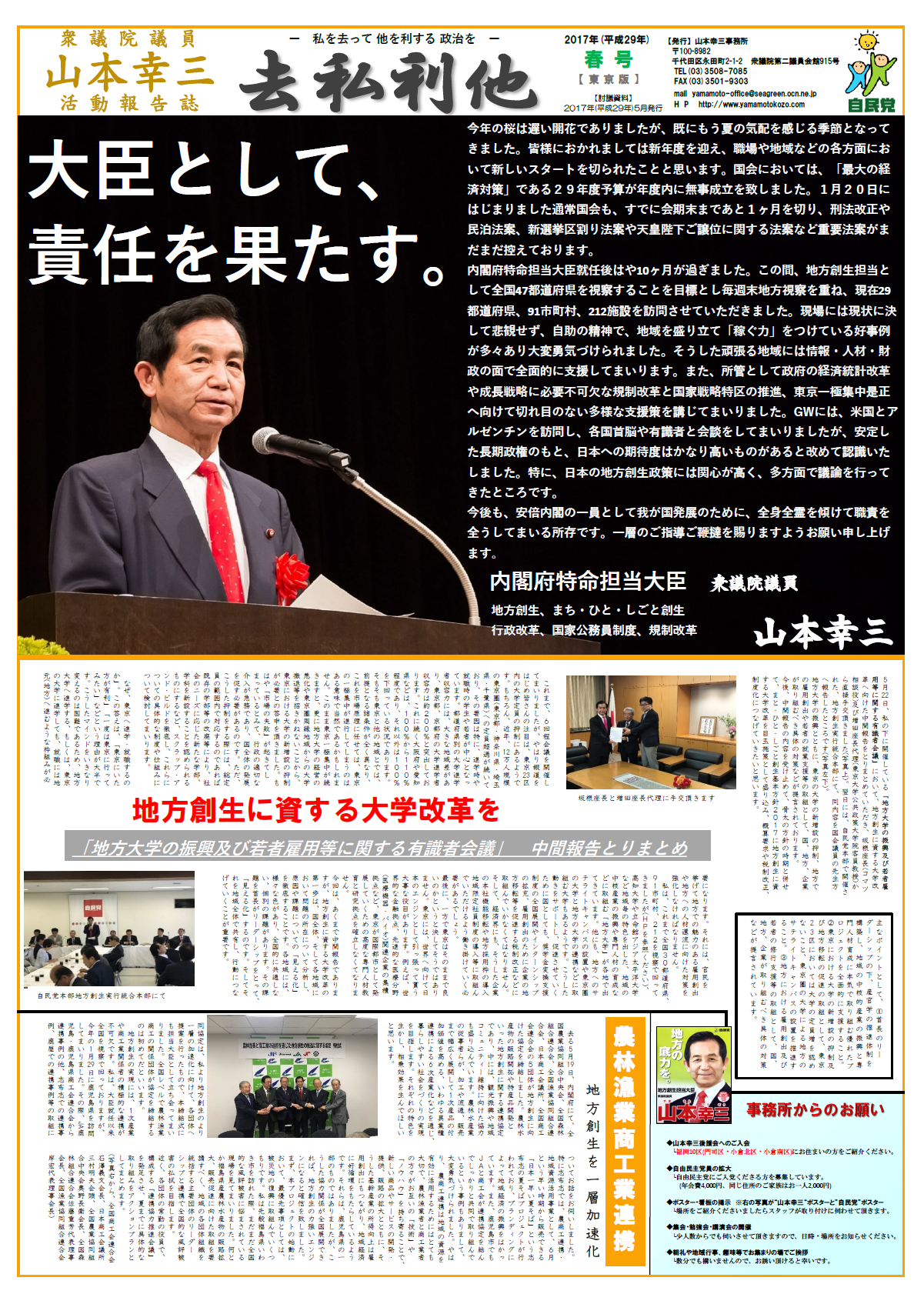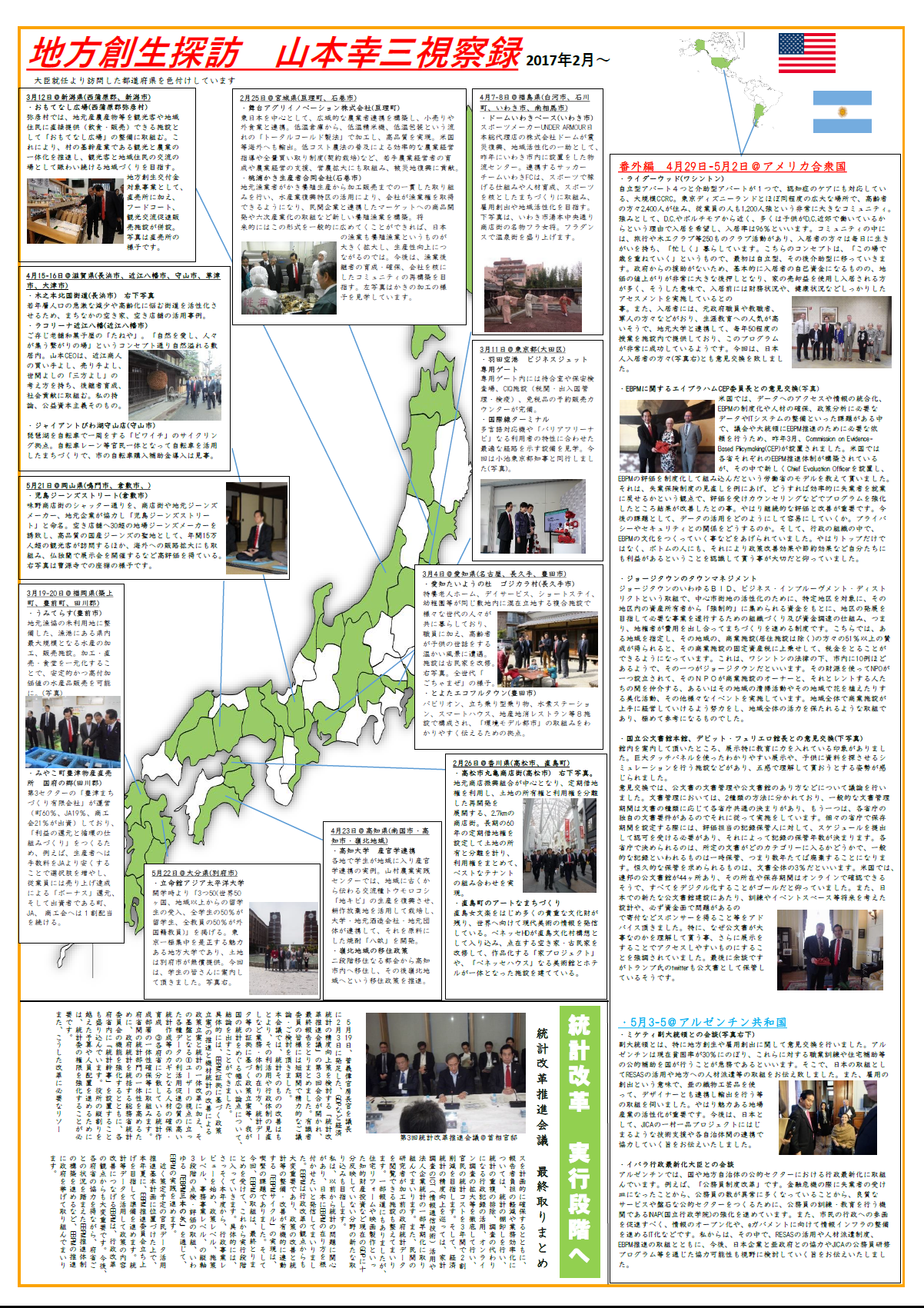活動報告
山本幸三活動報告誌「去私利他」春号のご案内(+English ver)
このたび、私共山本幸三の活動報告誌、「去私利他」の春号を作成いたしました。
昨号の発効後今年2月からの活動をまとめたものになります。
また、今回は英語版も作成しております。
併せてぜひ、ご覧ください。
(English)
Kozo Yamamoto Progress Update, 2017 Spring Edition
– Fulfilling Ministerial Responsibilities –
Although the cherry blossoms came in a little late this year, we’ve already crept into summer. I for one would like to welcome this change of season as a new start in our respective battles. At the National Diet, the FY2017 National Budget, the foundation of our most important economic policies, was safely passed in time. The Ordinary Diet Session, which began on January 20th, has only one month left to go, although there remain crucial bills regarding revisions of the penal code, home-sharing laws, electoral district laws, and the abdication of the emperor.
It has been 10 months since I have taken my post as state minister. During this time, I have visited 91 municipalities in 29 prefectures and administrative states, learning regional revitalization practices from 212 establishments around the country every weekend, with the intention of studying examples from all 47 prefectures and administrative states of Japan. During these visits, I was strongly encouraged after witnessing incredible accounts of people refusing to give up, driven by the spirit of self help, and banding together to generate revenue for their localities. We offer our full backing through data, human resources, and finances, and wish to continue seamlessly providing a myriad of assistance measures through economic statics reform and implementing sophisticated growth policies – for these to be fruitful, however, handling the overconcentration on Tokyo, regulatory reform, and successfully operating national strategic special zones is necessary. During the “Golden Week” vacation, I visited the United States and Argentina to engage in discourse and debate with political leaders and experts, and was proud to find that expectations for Japan were high. Within this, regional revitalization policies especially drew interest.
As a member of the Abe cabinet, I plan on continuing to give my all to fulfilling my responsibilities to further develop our country, and I humbly ask for your continued support as we strive forward in our shared endeavors.
Yours truly,
Kozo Yamamoto
Member of the Lower House
Minister of State for Regional Revitalization, Regulatory Reform, Administrative Reform, etc.
May 2017
University Reform – A Key Step in Regional Revitalization
Midterm Report on promoting regional universities and youth employment
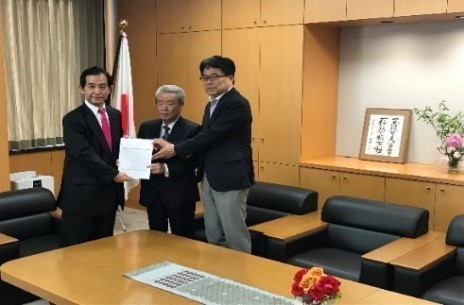
On May 22nd, Chairman Sakane (special adviser to KOMATSU) and Vice Chairman Zouda (Visiting Professor at the Graduate School of Public Policy of the University of Tokyo) personally handed me the summarized interim report of their outcomes from the Expert Committee on Regional University Promotion and Youth Employment. The very next day, I had the honor of presenting the findings to fellow Diet members at the Regional Revitalization Implementation Synthesis Office within the Liberal Democratic Party Headquarters. Along with promoting regional universities, we’ve motioned for establishing specific details on halting the expansion of universities within Tokyo and putting more strength into regional job creation and youth employment. In the coming days, we will be incorporating our studies and work into the City, People, and Job Creation Comprehensive Plan of 2017 with university reforms as one of the centerpieces of our policies, linking them with our budget, tax revisions, and regulations.
As we commence the sixth Expert Committee on Regional University Promotion and Youth Employment, what seems to draw the most attention from the press and the general public is controlling university admittance numbers within Tokyo’s 23 wards. With an excessive number of 120,000 people in the greater Tokyo metropolitan area, the current systems of entering university and entering the job market lie at the root of the issue. There exists a large gap between the metropolitan areas and regional areas of Japan, as Tokyo and Kyoto’s university capacities have been exceeded by roughly 200%. Following this, Osaka and Aichi Prefecture are experiencing between 100~110%, while other areas of Japan are under capacity. If one were to look at the issue from a market principle perspective, perhaps it is natural how these numbers may be skewed further to Tokyo if there is no intervention. If this continues, however, regional universities will degenerate, and overburdened schools within the greater Tokyo area may be forced to relocate – the expert consensus was that it would be for the better to halt constructions of new universities. At this point, the “free market” for universities has failed, and the state must appropriately intervene to assist the development of the country’s higher education as a whole. To halt the expansion of universities within Tokyo, however, it will require measures such as restructuring departments of various universities, establishing new departments to accommodate societal needs, and enforce scrap and build policies; we would like to consider specific regulations and mechanisms for these purposes moving forward.
For those pondering why entering a university in Tokyo and coming to the capital for employment is so popular, one simply needs to look at survey results. “It is more advantageous to be in Tokyo,” and “I’ve always wanted to come to Tokyo,” claim over half the results. Since changing these mindsets is an endeavor to say the least, making going to regional universities, or allowing easier access to better work in regional areas after graduating from a university in Tokyo, is necessary. For this, the public and private sectors must cooperate to move towards drawing out the best that regional areas offer for job creation and retrieving talent back from Tokyo.
I personally have witnessed numerous areas around Japan (please visit my homepage for further details) that have actively and successfully engaged in producing unique higher education institutions, such as Kouchi University and Ritsumeikan Asia Pacific University, which train specialists and promote their region’s core industries. Meanwhile, some universities in Tokyo are creating satellite campuses in more rural areas, or creating deep networks with regional universities. The national government’s role for these promising developments should be to support and encourage them through scholarships, implementing internship programs, and reforming tax policies that foster job creation. On top of this, we will need to see to it that companies can offer preferential treatment for regional staff and are able to transfer corporate functions to various areas around Japan outside of metropolises. Finally, there is work to be done in Tokyo as well. As the engine that pulls Japan, it must excel globally as a hotspot for industries such as finance and cutting edge medical equipment and biomedical development; for this, we need to ensure that Tokyo too has talented professionals, specialists, and top research facilities.
Although it is a midterm report, the first steps of university reforms that can contribute to regional revitalization is to identify and locate the problems, analyze tem, and make the root causes visible. Every region of our country is unique. So are the problems. It is important that we make visible each issue through community leaders, share the findings, and connect them to action.
Agriculture, Forestry, and Fisheries Commerce-Industry Cooperation
Boosting Regional Revitalization
At the Cabinet Office on May 19th, the National Agricultural Cooperative, the National Forestry Association, the National Fishery Cooperative Association, the Japan Chamber of Commerce and Industry, and the National Commerce and Industry Federation all banded together in the name of regional revitalization. The cooperation agreement revolving around agricultural and forestry products focuses on product and market development for regional goods and services, and includes sightseeing promotion and community improvement projects. From processing to distribution and marketing, practitioners from various sectors will cooperate to add value to primary products, synthesizing and pushing for a more livable society.
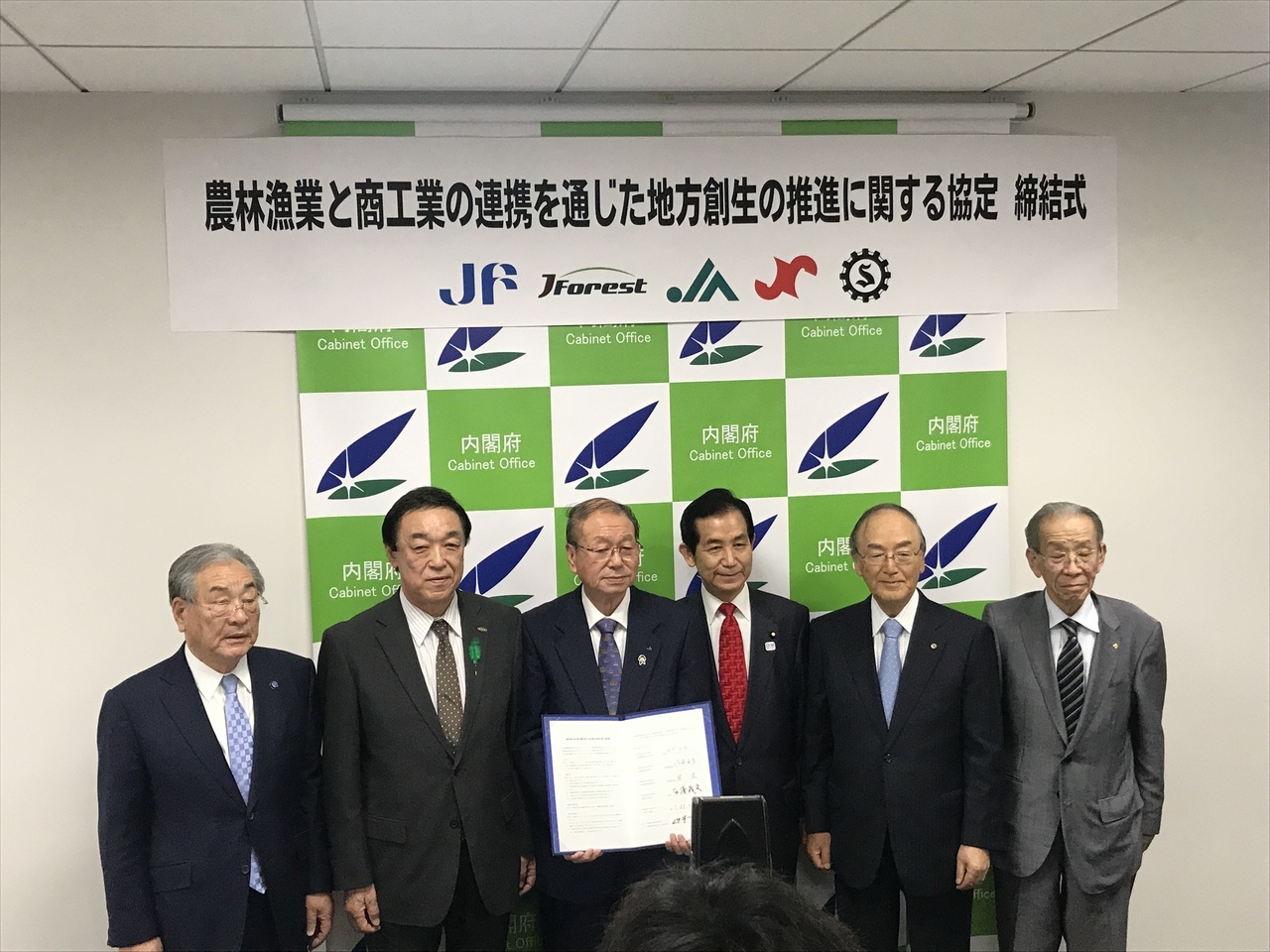
As minister in charge of regional revitalization, I was proud to work with these various groups that have used this opportunity give a boost to regional revitalization – it is the first time in our country’s history that agriculture, forestry, and aquaculture industry organizations have made such a pact to cooperate on commerce at the national level.
In order to actualize our regional revitalization goals, proactive cooperation among primary industry and various commerce industry related organizations is imperative. As part of my regional visits since my appointment as minister, I travelled to Kagoshima Prefecture on January 29th. There, I had the auspicious opportunity to learn about how the Japan Agriculture Cooperative of Kagoshima and the Kagoshima Chamber of Commerce and Industry are joining hands, how various organizations are collaborating in Shibushi City, and various partnerships are springing up in Kanoya City. In Shibushi City especially, I was inspired by an excellent marketing project called “the earliest summer buckwheat noodles in Japan,” that could be on the market as early as June, was coming to fruition. I have come to find that agricultural commerce and industry groups are vital in drawing out the hidden potential of regional resources. When working with suppliers and manufacturers of various industries, they seem to complement each other with their knowhow and techniques, kick starting virtuous cycles of innovation for new products, and raise income levels of the industries while offering new and jobs. Although the examples I speak of are from what I witnessed in Kagoshima Prefecture, I strongly believe that if these practices spread around the country, they can be powerful engines for regional revitalization.
As for implementation, I believe our priority should lie in restoration of areas devastated by natural disasters. When I visited Iwaki City, I saw there still exist harmful rumors about the region’s primary industries at the national level, troubling the hardworking people of Fukushima Prefecture.
In order to expand the prefecture’s markets and promote the sales of the region’s plentiful and high quality products, and to purge harmful stereotypes, we must call upon various organizations within Fukushima to unify and create synthesis among the prominent groups’ leaderships. I will be organizing officials from various groups to form a Cooperation Promotion Committee that will establish specific action plans by summer.
Rustic Visits – The Kozo Travelogue for Regional Revitalization
February 25th
Miyagi Prefecture – Watari Town, Ishinomaki City
Butai Agri-Innovation Company, Watari Town
Centered in East Japan, Butai connects a wide range of agricultural industries with retail and restaurant industries. From low-temperature warehouses and cold rice hullers to cool packaging methods, Butai prides itself on high quality “total cold manufacturing” processes, exporting goods to countries such as the United States. The company is also involved in contract cultivation and streamlining the industry through efficient agricultural methods, offering instruction to business owners. They train the next generation within the industry while also helping to develop Miyagi Prefecture’s agriculture, and contribute to the recovery of disaster stricken areas.
Momonoura Oyster Producer Limited Liability Company, Ishinomaki City
Local fishermen take farmed oysters straight from the waters to processing and then to retail. As a part of the national strategic special zone for aquaculture, companies can attain certain fishing rights and cooperate with markets in product development and sixth sector industrialization, paving the way to new grounds for farmed fishing. If we can spread this system on a national level in the future, there is potential for Japan’s fishing and farmed fishing industries to expand and rise in production. We will strive to secure and train the next generation of industry professionals and have companies act as the nucleus of rebuilding these communities.
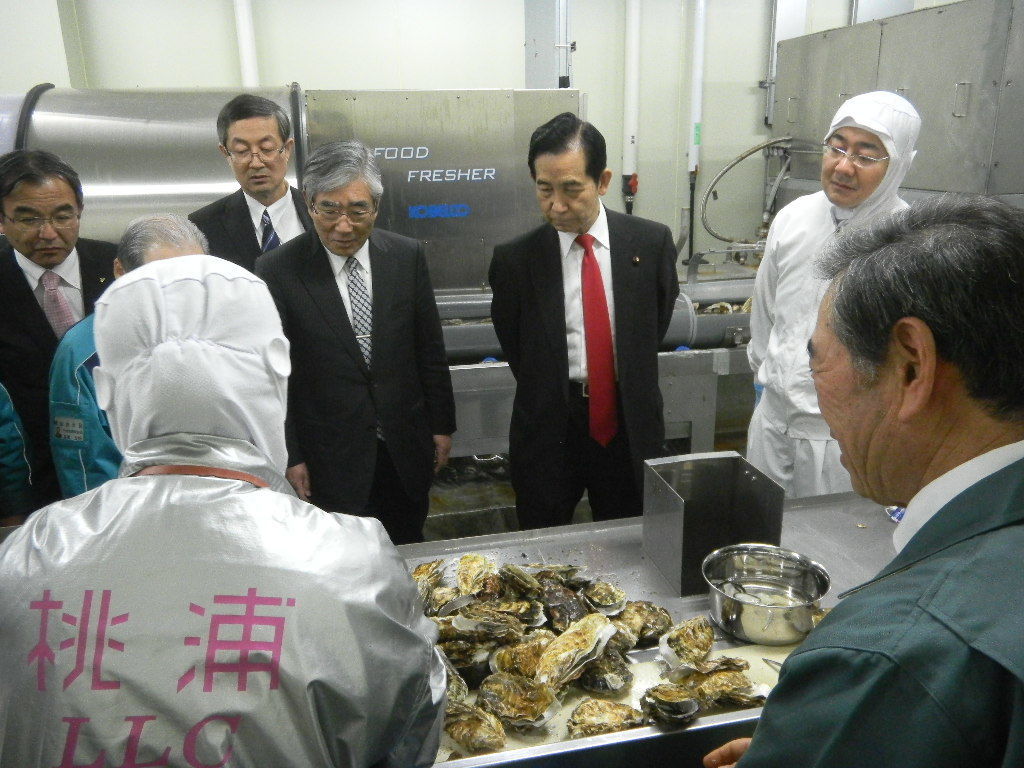
February 26th
Kagawa Prefecture – Takamatsu City, Naoshima Island Town
Takamatsu City Marugame Shopping District
With the local shopping district revitalization union at the center, and through using fixed term leases, a redevelopment plan is underway at this 2.7km long shopping district. A sophisticated tenant matching system was derived through measuring and dividing properties and usage rights.
Urban development through Naoshima Art
Spearheaded by women’s puppet theater, with many precious cultural artifacts left intact in the background, the town is taking on the world by offering its modern art. Benesse HD, a private company, is working with conceptions of the local culture and reforming open houses and old-fashioned Japanese houses into retail, and currently constructing an institution that has a combined art museum and hotel.
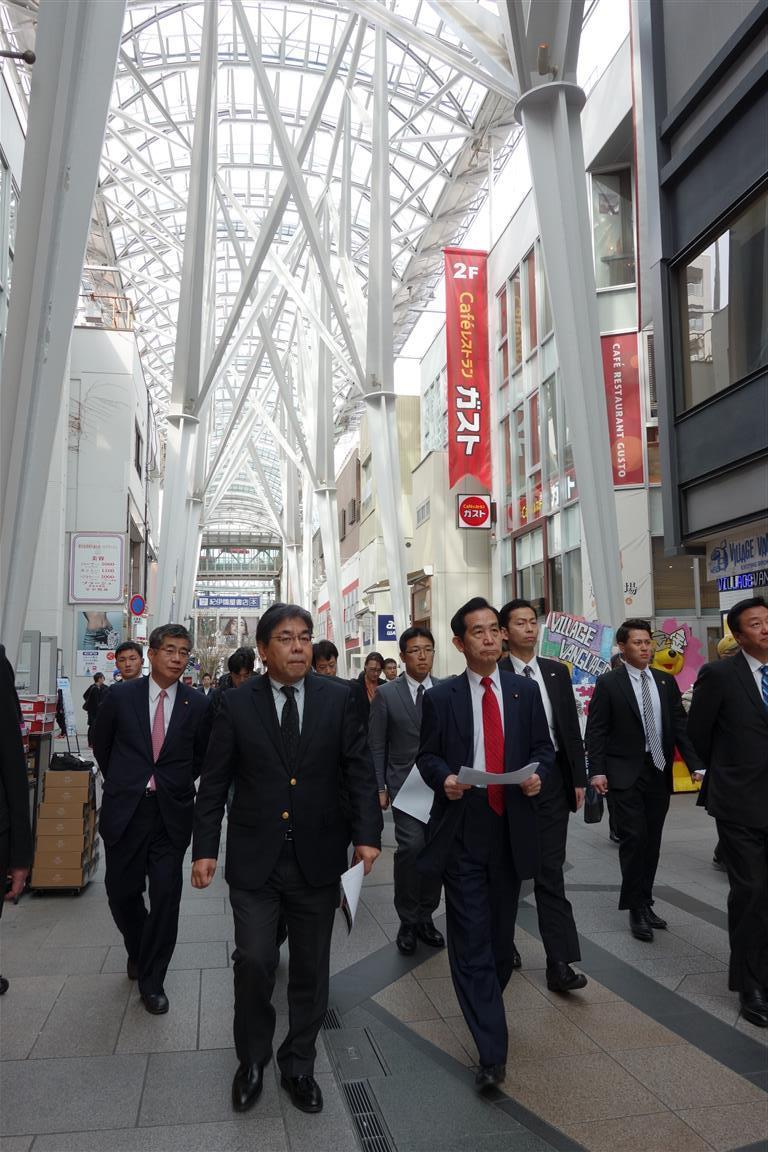
March 4th
Aichi Prefecture – Nagoya City, Nagakute City, Toyota City
Aichi Shrine of the Sun Adult Care Facility, Nagakute City
Intensive care for the elderly, day services, short stays, and kindergarten facilities all are covered under the same umbrella at this expansive establishment that witnesses people of different generations living in harmony. I was lucky to learn how the elderly are able to take care of the young here at this reformed traditional Japanese-style house.
Toyota Ecoful Town, Toyota City
A grand pavilion, stand up scooters, hydrogen stations, smart-houses, and unique restaurants that use local food are all part of the environmentally modeled city that is divided into eight facilities.
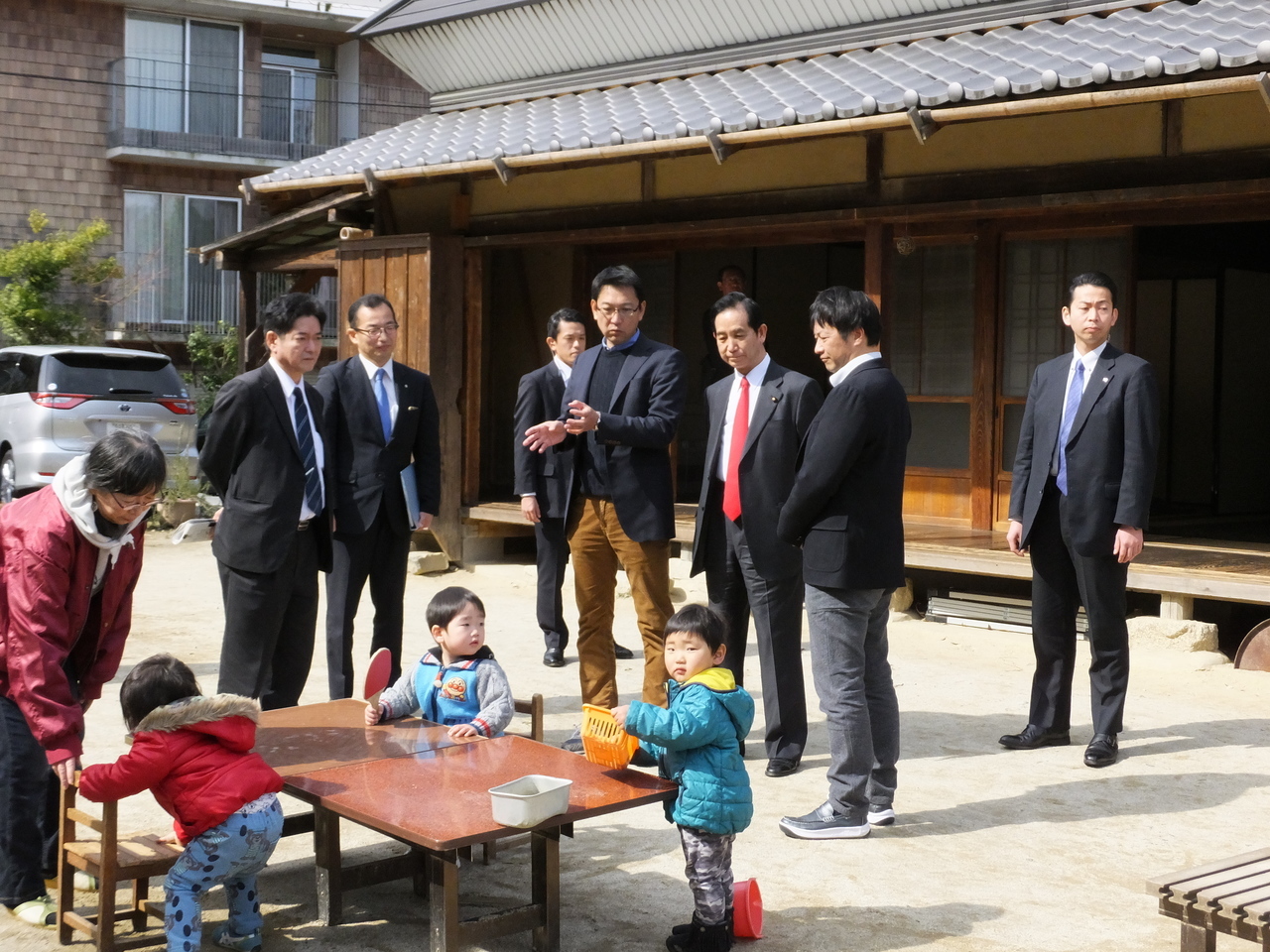
March 11th
Tokyo – Oota Ward
Haneda International Airport’s Business Aviation Terminal Premier Gate
The premier gate features waiting rooms, sophisticated safety check stations, CIQ facilities (taxing, medical examinations, immigration control), and duty free goods reservation counters.
International Terminal
I had the opportunity to learn about the multilingual computers and handicapped accessible navigation systems that the airport had equipped. I was lucky to travel together with Tokyo Governor Koike for this occasion.
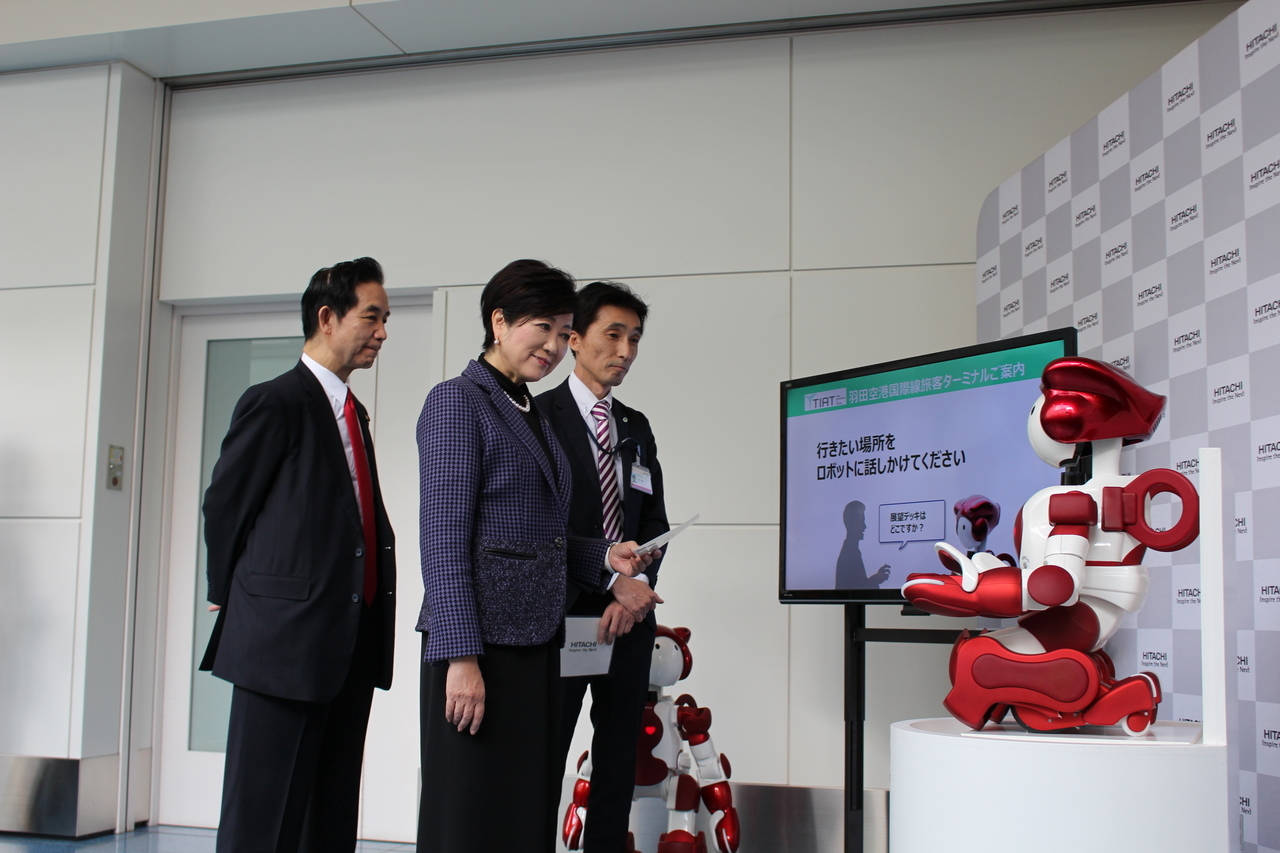
March 12th
Niigata Prefecture – Nishikanbara District, Niigata City
Visited the “Hospitality Plaza” (Yahiko Village, Nishikanbara District), where direct sales of local produce and sightseeing are linked to offer the region’s two main industries to guests in an innovative way that also bands together the community. Utilizing regional revitalization grants, a food court and tourism exchange center have been jointly established.
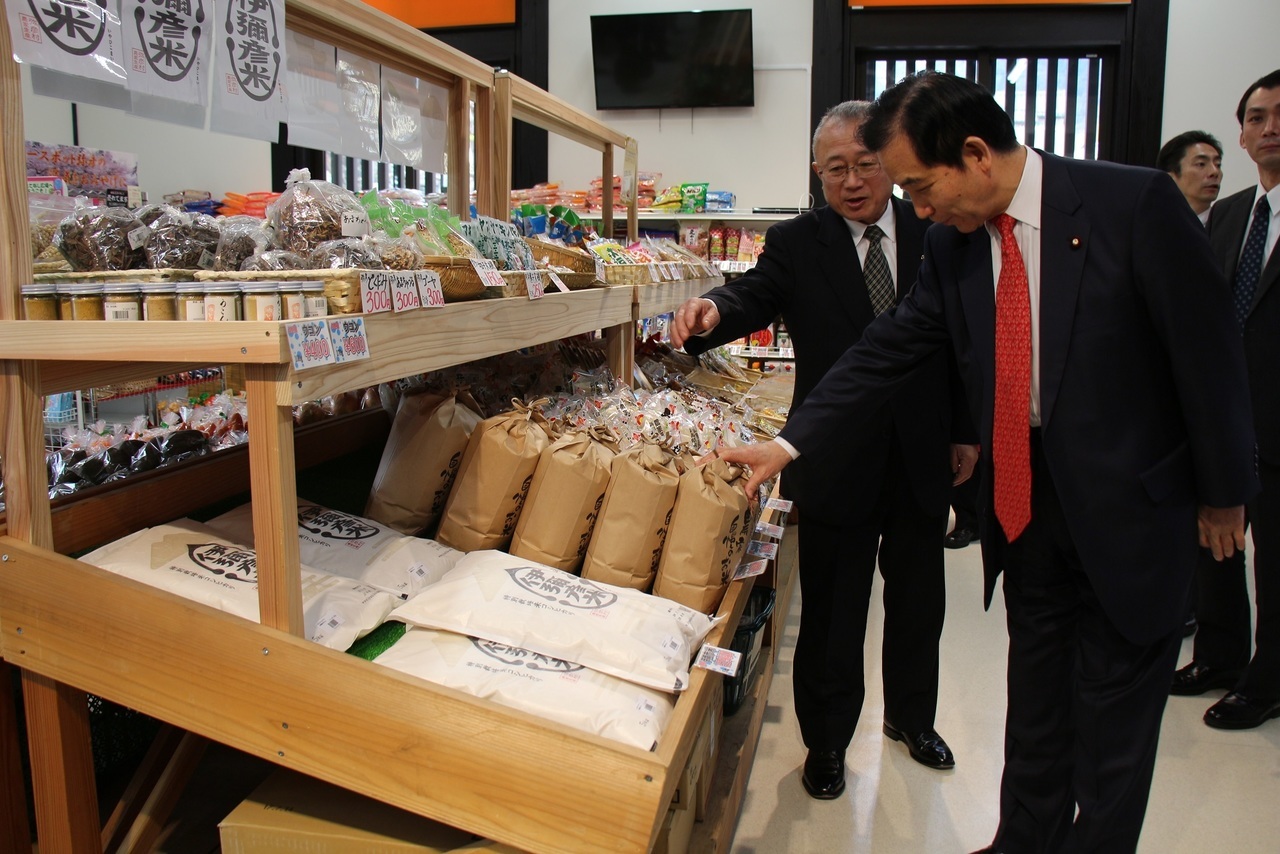
March 19th ~ 20th
Fukuoka Prefecture – Chikujo Town, Toyomae City, Tagawa District
Umiterasu, Toyomae City
Visited the prefecture’s largest aquaculture processing and retail facility, which was situated on the local fishing cooperative’s unused land. Through combining processing, direct sales, and a dining facility, they have made possible stable and high quality distribution (picture below).
Miyako Town Kokufunosato Direct Sales, Tagawa District
Through a joint venture of government and business, the Toyotsu Urban Development Company (60% city-owned, 19% Japan Agriculture Cooperative-owned, and 21% local chamber of commerce and industry-owned) works towards generating profits through healthy business circulations. Producers are charged fewer fees than they would through the Japan Agriculture Cooperative, employees are given bonuses when completing sales, and the three entities that created the company are each given a tenth of the dividends.
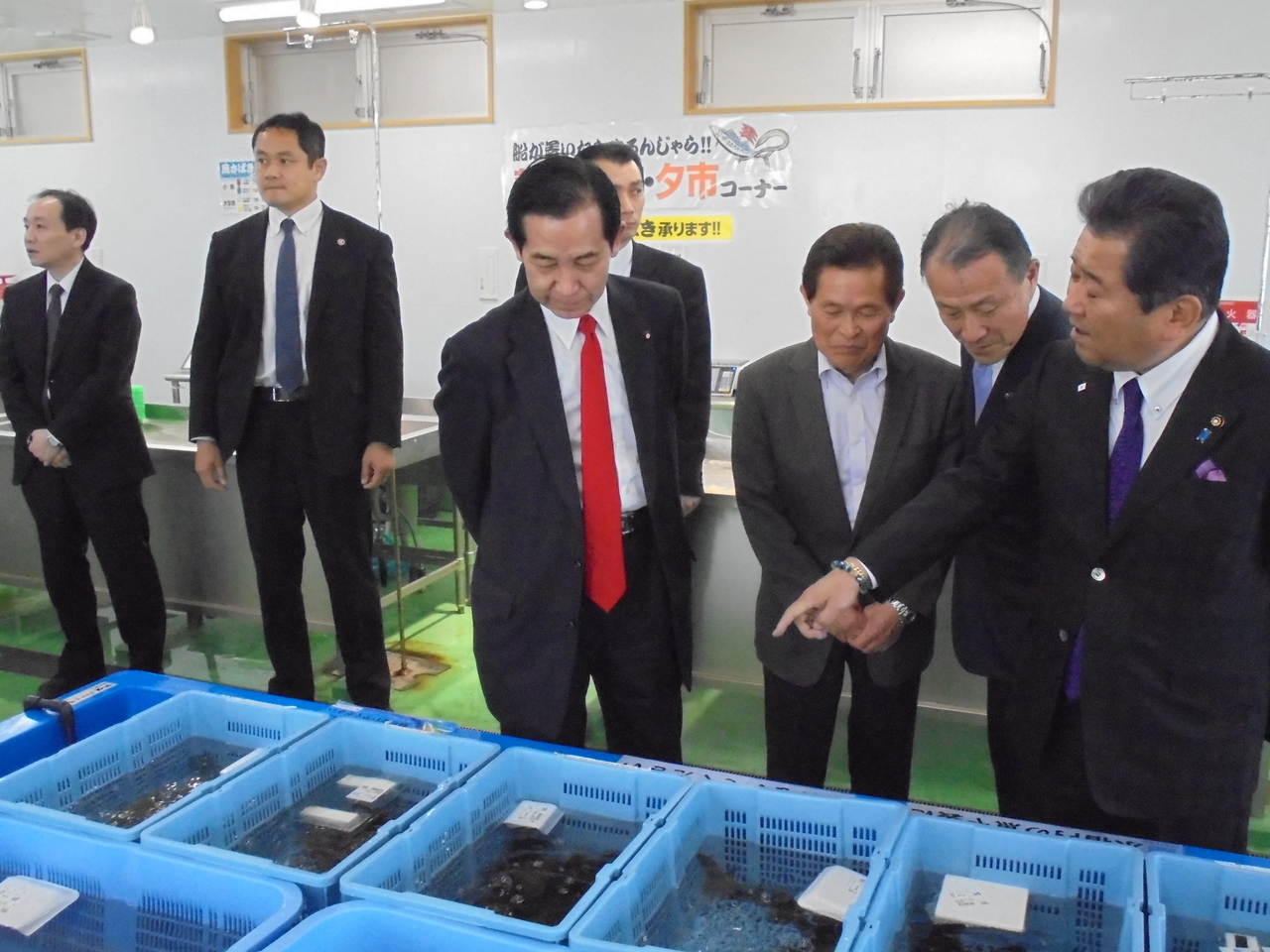
April 7th, ~ 8th
Fukushima Prefecture – Shirakawa City, Ishikawa City, Iwaki City, Minamisoma City
Dome Iwaki Base, Iwaki City
The multinational sporting goods manufacturer Under Armour’s Japan headquarters built a large distribution center in Iwaki City last year in part to assist with regional revitalization efforts after the great earthquake. The local soccer team, Iwaki FC, is taking on their own challenge of job creation and economic growth through sports. The picture below shows one of Iwaki City’s shopping district’s famous “Hula Ladies,” who enliven the hot spring district.
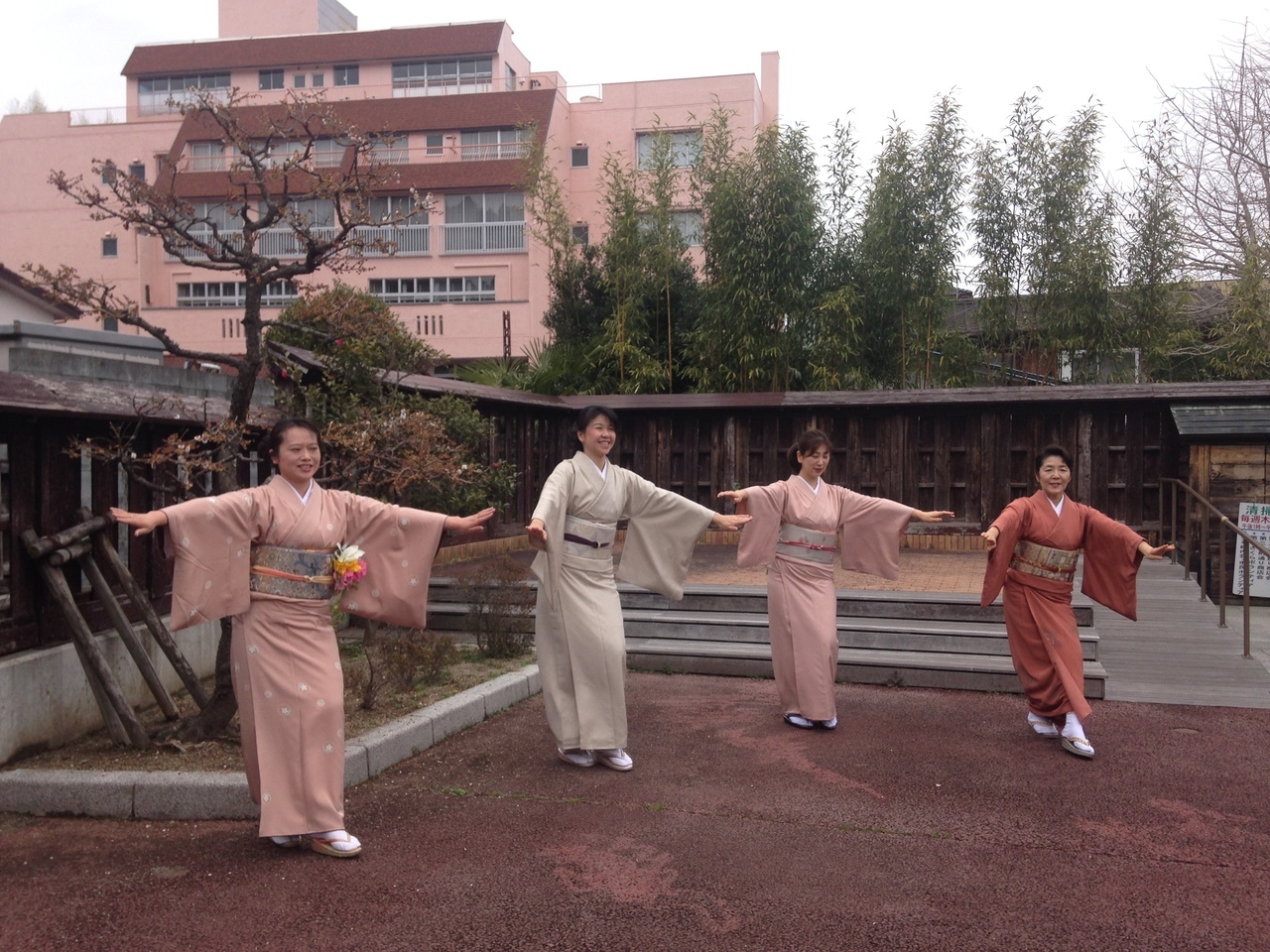
April 15th ~16th
Shiga Prefecture – Nagahama City, Omihachiman City, Moriyama City, Kusatsu City, Otsu City
Kinomotocho Hokkokukaido, Nagahama City (photo)
In order to combat declining rates of youth and an aging population, the municipality is making use of open houses and empty stores.
La Collina Omihachiman, Omihachiman City
Visited the famous traditional Japanese confectionary store, “Taneya.” Through the concept that the space “brings people together and endears nature,” CEO Yamamoto believes in holistic contributions to society through his buyers, suppliers, and community at large while training his successors. We have very similar philosophies in this manner, as I cherish public interest capitalism.
“Giant,” Lake Biwa, Moriya City
Witnessed the successful cooperation between private and public sectors in creating bike lanes around Lake Biwa. The city’s bicycle purchase grants proved to be a very worthwhile investment as well.
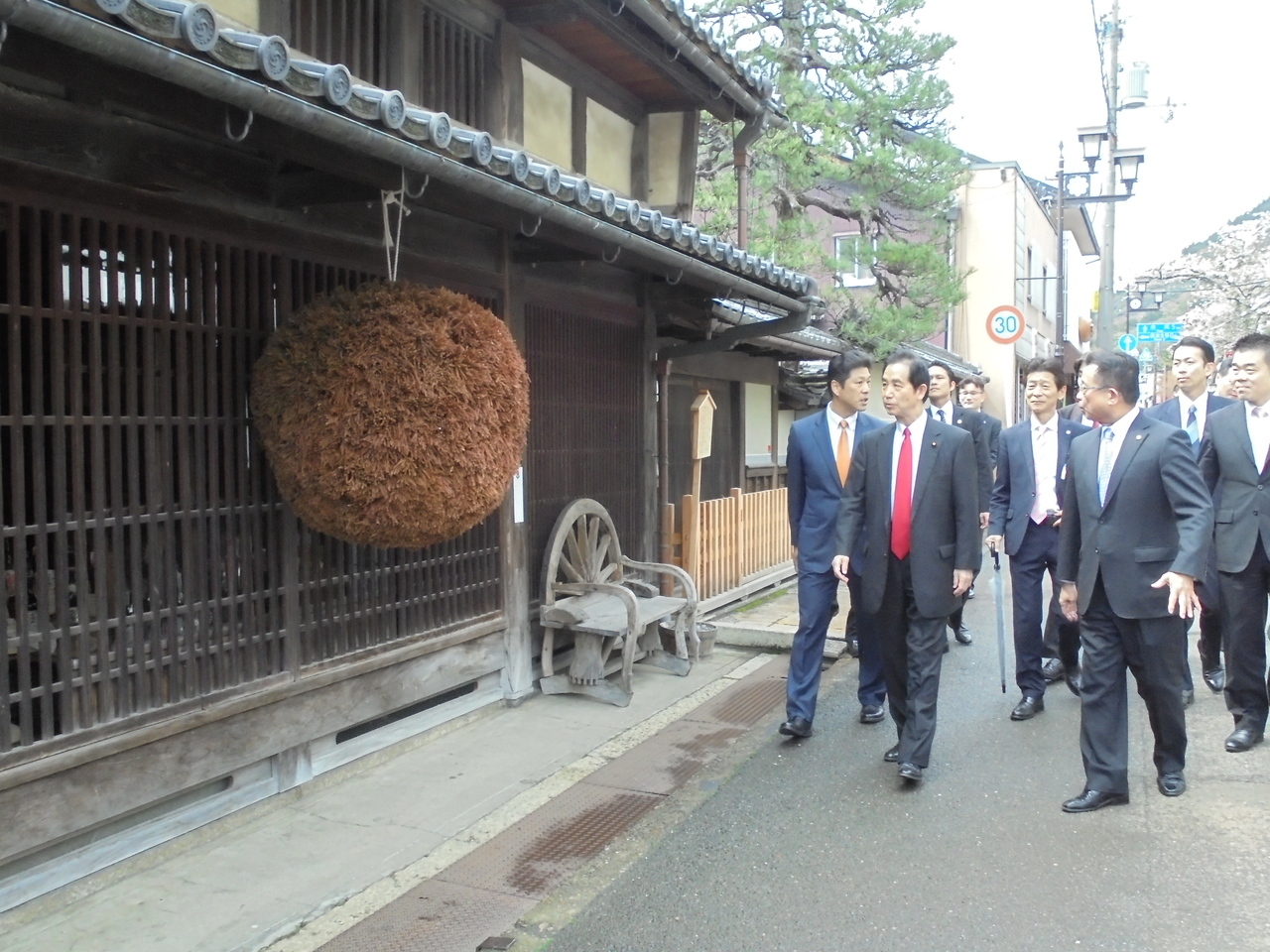
April 23rd
Kochi Prefecture – Nankoku City, Kochi City, Reihoku Region
Kochi University & Industry, Government, and Academia League
With the participation of students in various regions of Kochi, a collaborator league taking in industry, government, and academia was formed. The Sanson Agricultural Center began producing a local traditional corn using abandoned farmland, and with the help of the university, a local sake brewing company, and local organizations a corn Shochu called “Youne” was developed.
Reihoku Region’s Migration Strategies
Learned of the promotion of a two stage moving process, first from metropolises to Kochi City and then to the Reihoku Region.
May 21st
Oita Prefecture – Beppu City
Ritsumeikan Asia Pacific University
From the time it opened, Ritsumeikan Asia Pacific University has upheld its objective of accepting students from 50 different countries, comprising over half of the student body with exchange students, and employing half of the staff from foreign countries. The city of Beppu provides the university with free land. This regional university is a good example of how we can counterbalance the overconcentration in Tokyo. I had the pleasure of having students show me around.
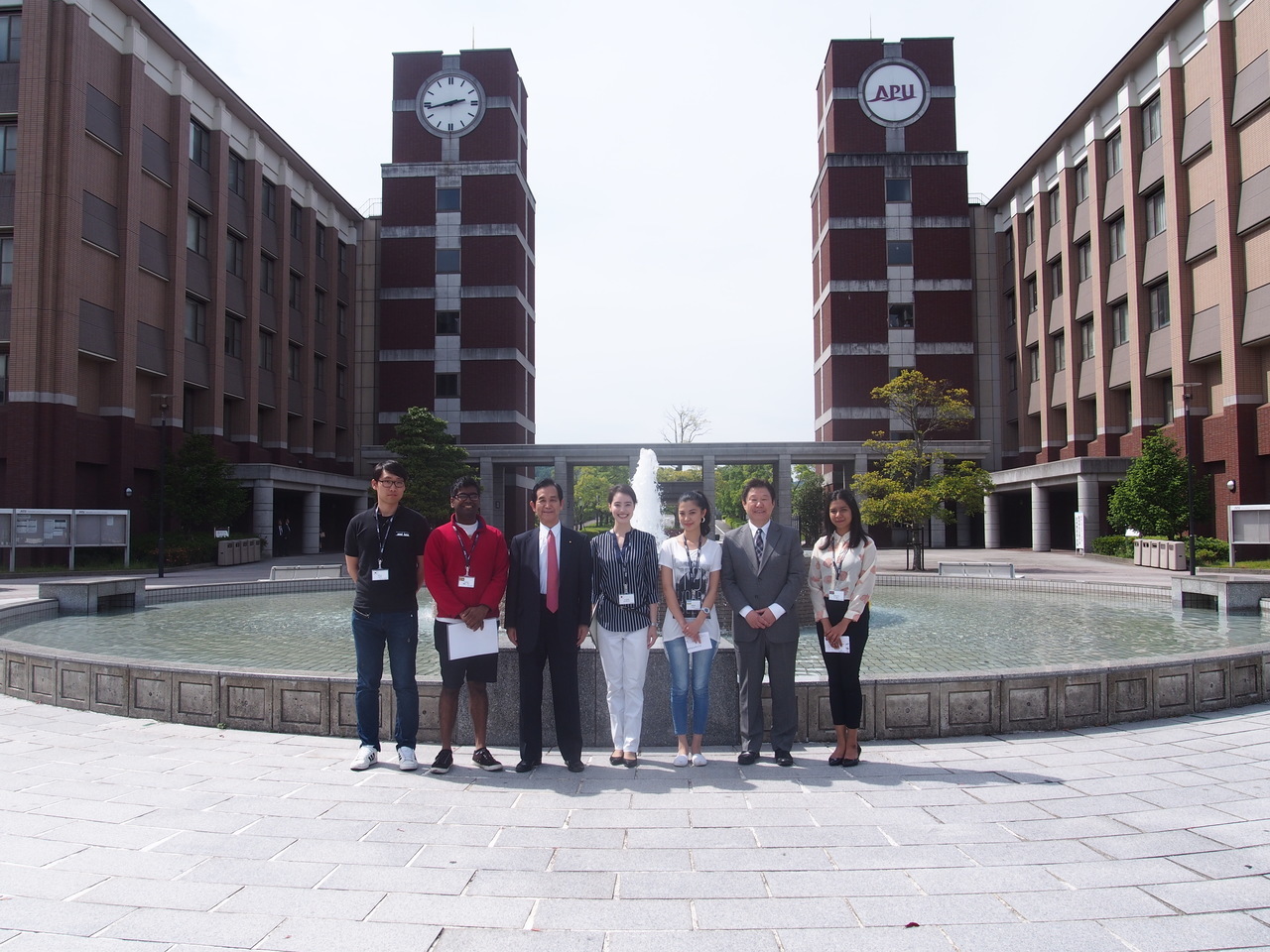
May 27th
Okayama Prefecture – Naruto City, Kurashiki City
Kojima Jeans Street
The Ajino shopping district, local businesses, and jeans makers came together to form what is known as the Kojima Jeans Street. Through bringing in local jeans makers to fill 30 plus emptied stores, the area is now famous for producing high quality domestic jeans, attracting over 150,000 visitors annually and expanding their foreign exports. Their exhibitions in France, Germany, and the Netherlands were especially popular. The photo to the right was taken during meditation at the Sogenji Temple.
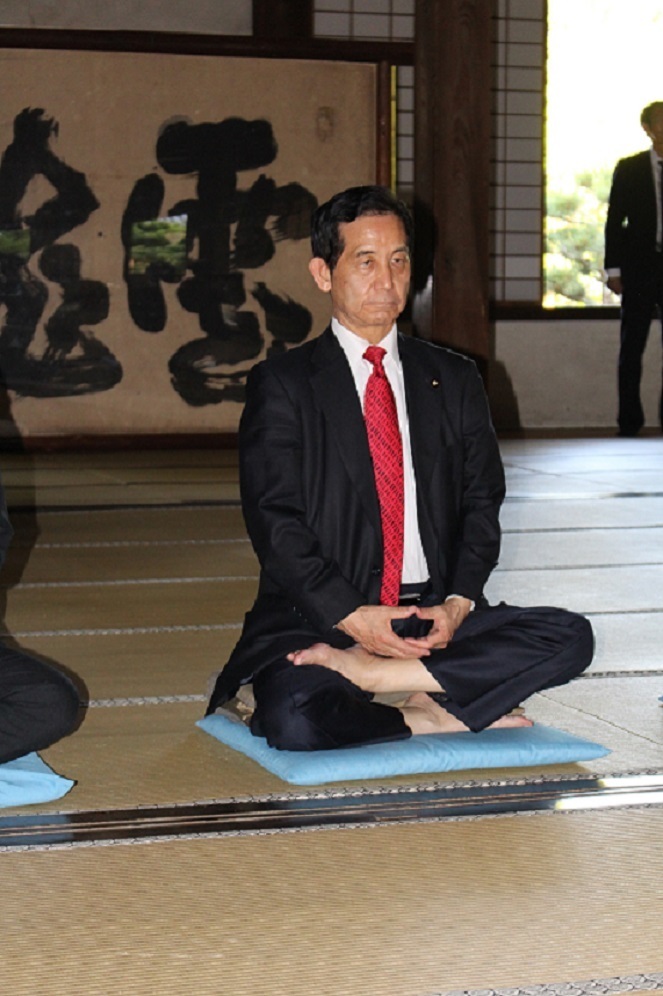
Spinoff Edition ~ April 29th ~ May 2nd
United States of America
Riderwood, Washington
With four large apartment complexes and one standalone apartment for assistance and direct care, the massive continuing care retirement community (CCRC) is also equipped to care for Alzheimer patients. Riderwood occupies almost as much space as Disneyland, and employs over 1,200 people who care for 2,400 occupants – it has an occupancy rate of 96%, and many of the residents enjoy the location since they have children who work in DC. The community offers 250 clubs ranging from woodworking to travel, keeping residents’ lives enriched. The concept is for residents to leisurely spend time, first at one of the independent apartments, then at the one that offers assistance. Although payment is out of pocket since the institution receives no government assistance, rising land values offer support as many tenants sold their homes to join. Tenants range from ex government officials and educators to service members, many of whom are invested in continuing their education. The local university cooperates with Riderwood, successfully offering around 50 courses every year within the facilities. I had the wonderful opportunity to converse with the Japanese residents (picture).
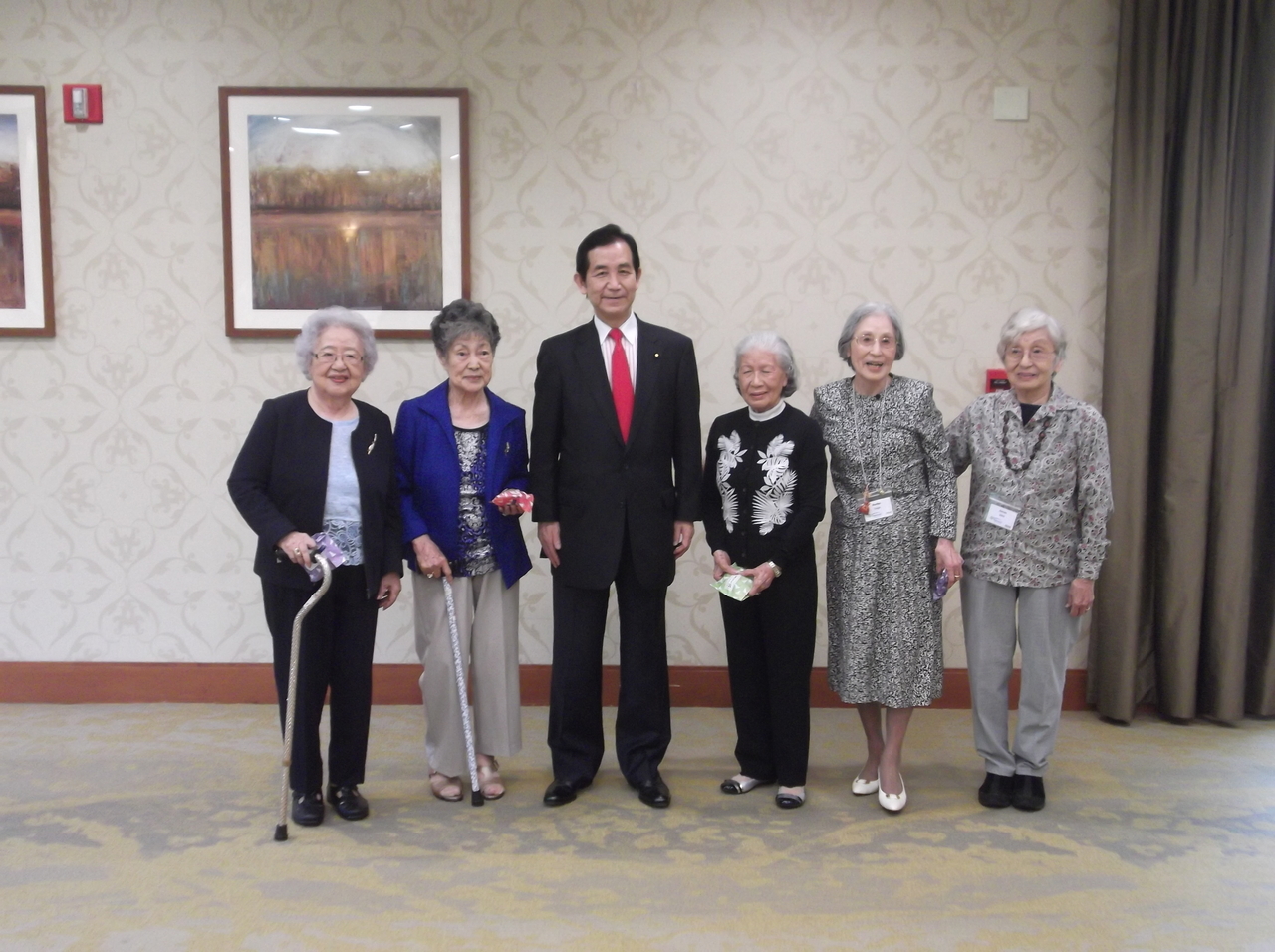

Dialogue with Chief Evaluation Officer Abraham on Evidence Based Policymaking
In the United States, having data access and information conglomeration, Evidence Based Policymaking (EBPM) and securing human resources, and appropriate data and IT systems for policy analysis are now the norm. In March of last year, a Commission on Evidence-Based Policymaking (CEP) was established for the president and various committees to access such useful tools. Various government departments within the US government have EBPM frameworks. After learning that new Chief Evaluation Officer positions were newly created, I was taught the ins and outs of the Department of Labor’s new model after EBPM evaluations were implemented. Through reviewing the unemployment insurance system with the objective of efficiently returning the unemployed to the workforce, they strengthened the program in the appropriate areas (such as through offering consulting) and found that the entire system operated at a higher caliber through continued evaluations and improvements. I believe that we must continue to think about how we can utilize data appropriately, and how privacy and security play into the mix. Finally, the topic came up of how EMPM concepts should be built into government administrations, and it became apparent that policy improvements and efficiency issues are beneficial to everyone, and not just those at the top, but also on the bottom, should understand this.
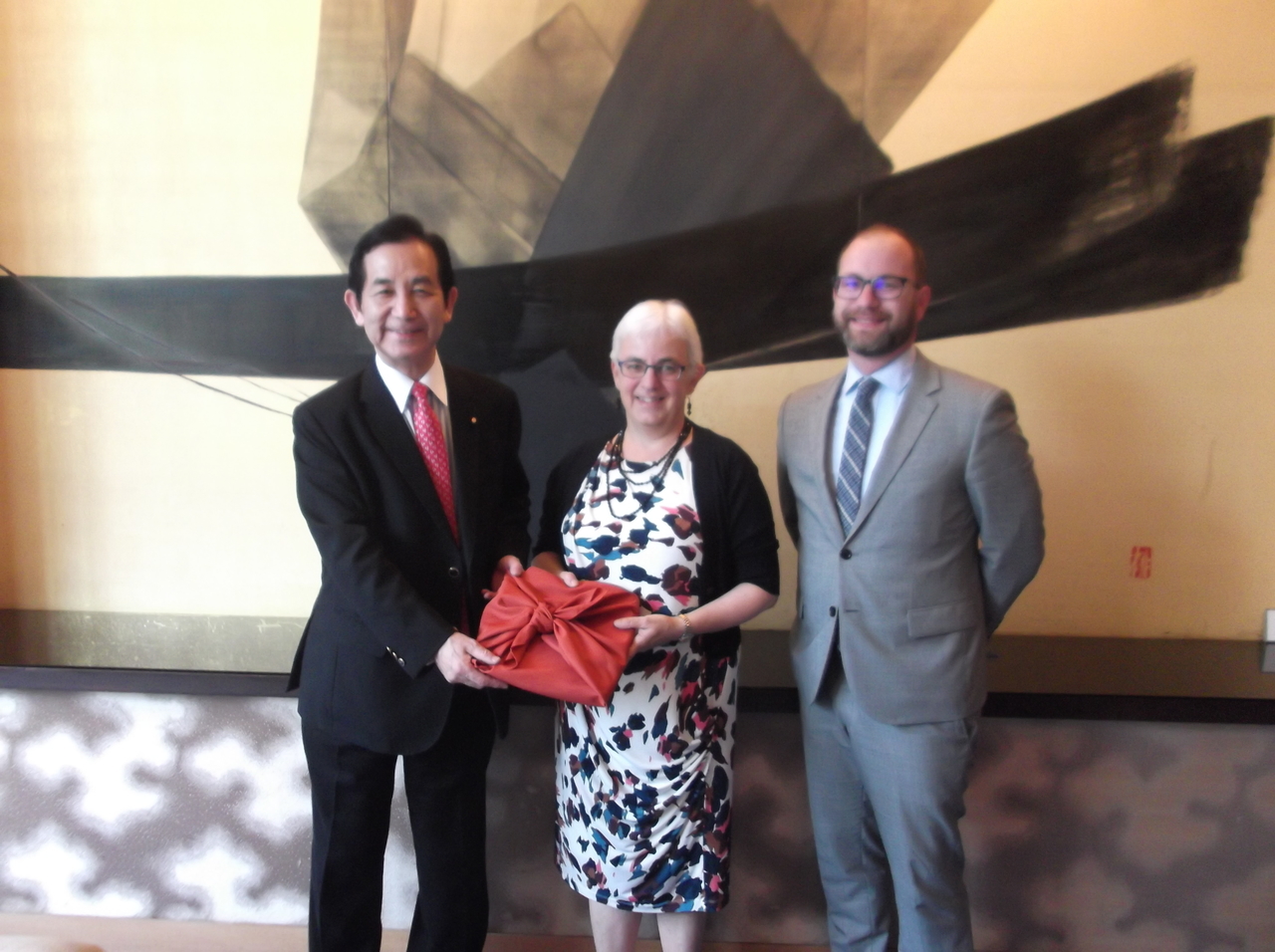
Georgetown’s Town Management
The Business Improvement District (BID) of Georgetown is a system in which funding is collected through taxes from a certain area’s upper echelon, and employs it towards bettering the roots of the entire region. In essence, it is an urban development undertaking. To implement this system, over 50% of a specific area’s commerce facilities (residence facilities are excluded) must agree, at which point additional taxes can be levied on top of fixed assets taxes under Washington DC’s laws. Ten districts have agreed to this system thus far; Georgetown is just one of them. Through the funds, an NPO was created, which intermediates between the commerce facility owners and their tenants. On top of this, they partake in activities such as city cleaning, plant trees and flours in the district, and hosting various events for the benefit of the district. I had many things to learn from the examples of the community coming together as one.
Discussions with National Archives and Records Administration (NARA)’s 10th “Archivist of the United States”: David Ferriero
As soon as I was shown my way around NARA, I could tell that they put great emphasis into exhibition and training. With giant touch panels and simulation installments for children, everything was accessible as well. Once situated, Archivist Ferriero and I were able to have a frank discussion on how public documents and facilities are to be managed. In document management, it seems as the practice is split into two ways in America – one in regard to general documents that all government agencies have the same means of dealing with, and the other a system where each agency has their own independent methods. When one wishes to preserve documents, the standard is for the official within the agency in charge of archives to review and determine the period for which the submitted documents will be preserved. The difference among agencies is seen when determining which category to file the documents under, where general records are stored only temporarily, and are disposed once the determined time has passed. Only 3% of all records are stored permanently. America’s federal government has 44 public records offices, and each has information online of file names and storage periods – they mentioned that it’s their goal to digitalize every record. We also received advice on employee training, event space, and funding and sponsorships related establishing Japan’s newest public records office. Above all else, Archivist Ferriero emphasized how important it is that the public understands the significance of archives, and that holding exhibitions are crucial in making records accessible. As a digression to wrap up the discussion, I learned how President Trump’s tweets are all saved as public records.
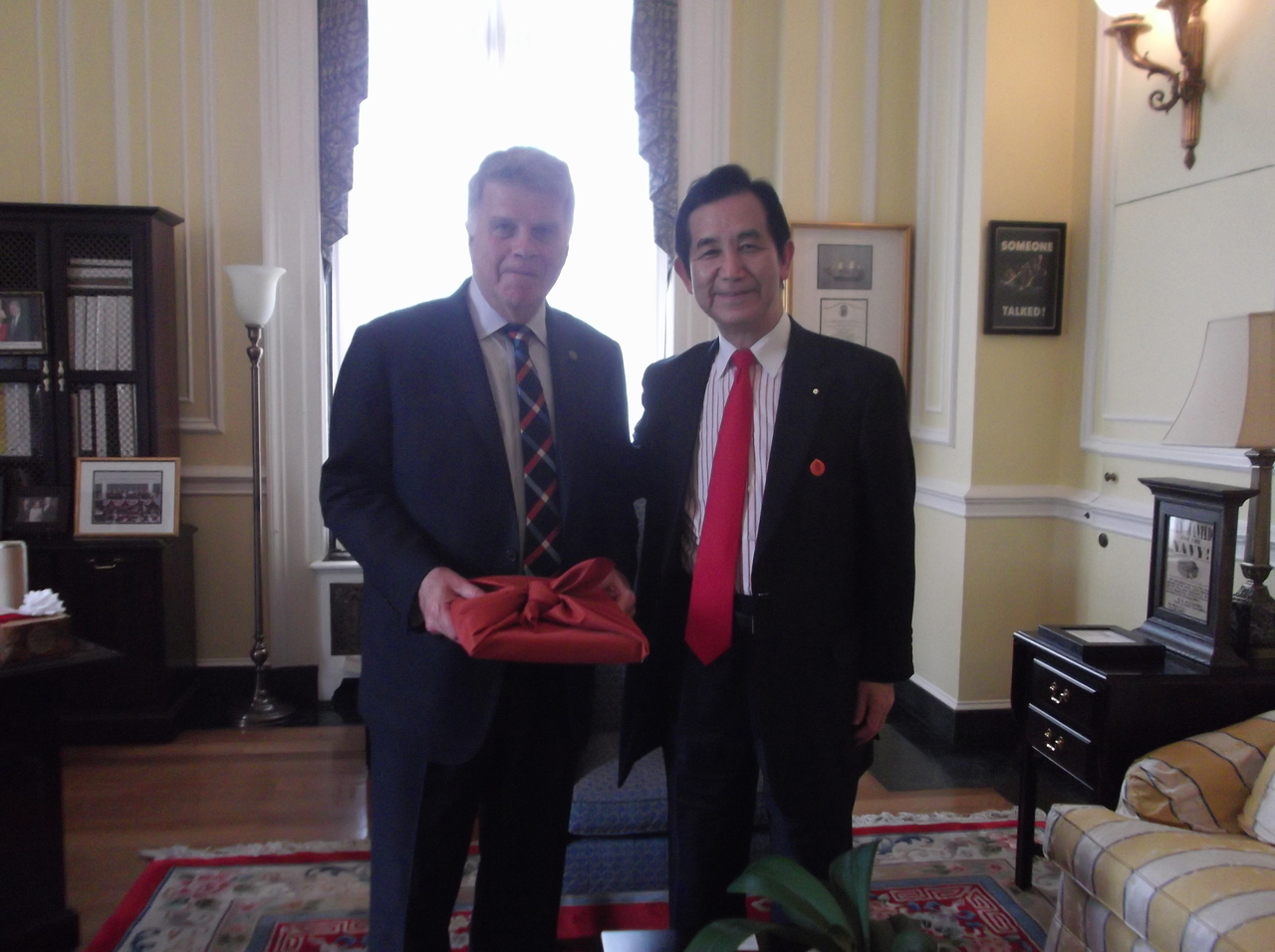
May 3rd ~ 5th
Argentine Republic
Discussions with Vice President Gabriela Michetti
My dialogue with VP Michetti mainly revolved around regional revitalization and job creation. Argentina’s poverty rate hovers around 30 percent, and government assistance such as job training and housing subsidies have been top priorities. I discussed Japan’s initiatives, such as RESAS and temporary regional employee placement programs, and as for Argentina’s job creation initiatives, I learned that the textile and handicraft industries are connected with designers for export oriented goods creation. Just as we emphasize in Japan, it seems that local production is important. In conclusion, I affirmed that we would like to continue cooperation in technical support and fostering cooperation among municipalities, using Japan International Cooperation Agency’s “One Village One Product” initiative as an example.
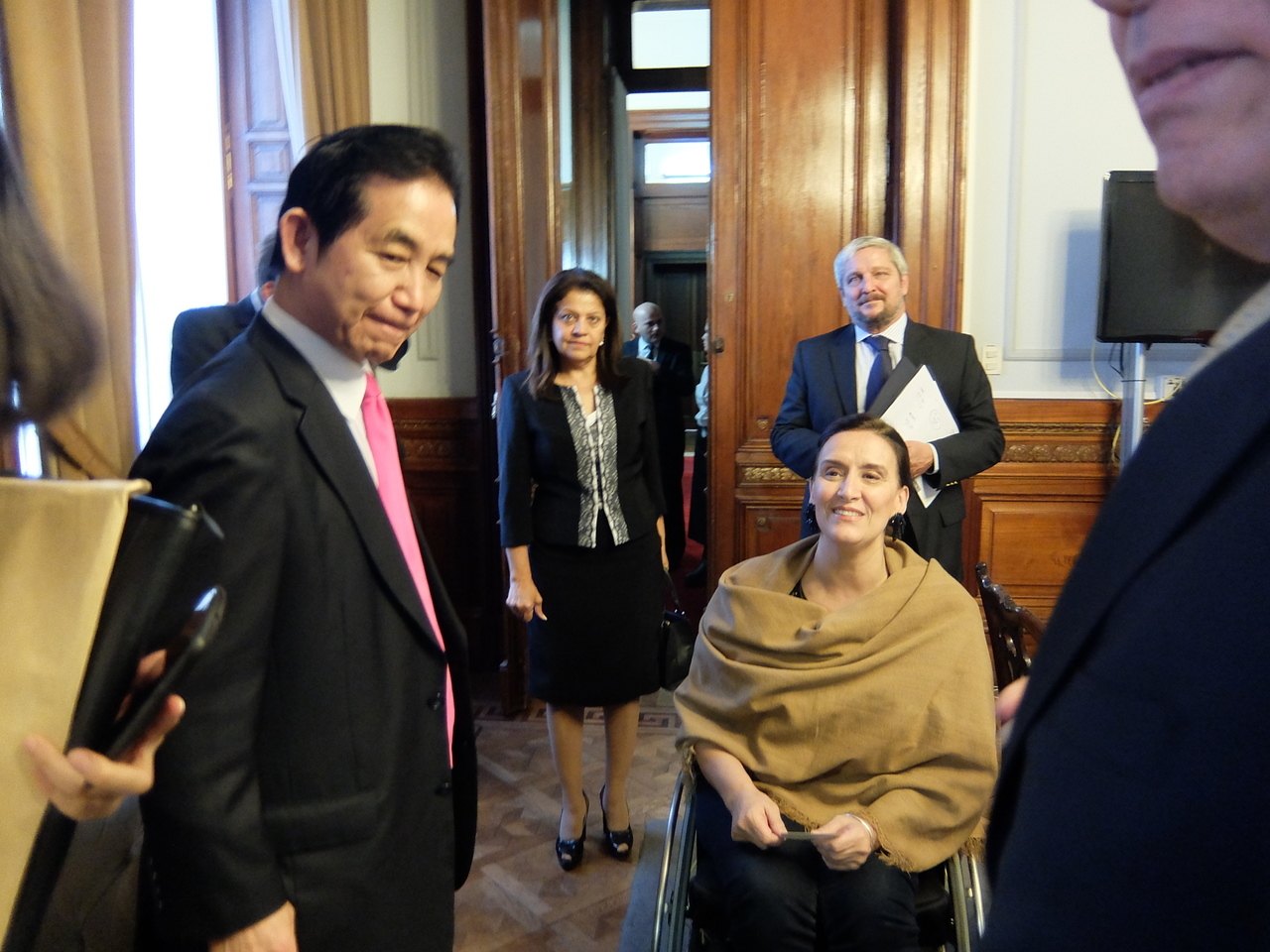
Discussions with Minister of Modernization Andrés Ibarra
In Argentina, both the federal government and municipalities are working towards modernizing the public sector of the country. One example is the civil service system. Since many were placed in government-funded jobs during the financial crisis as a means to prevent a depression, there is currently an irregular number of public employees, and the state has put strength into the National Institute of Public Administration (which trains and educates civil servants) in order to ensure quality government services and a strong public sector. Also, in order to raise citizen participation in government, they are taking measures to increase information transparency and are preparing information and IT infrastructure to enhance e-governance. In response, I elaborated how perhaps Japanese businesses can cooperate with Argentinian government through RESAS implementation and temporarily sending knowledgeable staff, EBPM collaboration, and JICA training programs.
Government Statistics Reform
Conclusions of the Statistics Reform Committee Meetings
The Statistics Reform Committee, which opened on February 3rd by Chief Cabinet Secretary Suga as chairman, and thoroughly debated issues such as GDP and policies that can improve the country’s economy, held its third meeting and issued its final report on May 19th. We were fortunate to have so many renowned experts on the committee who showed so much devotion in such a rushed period of time. Other than just on the reform of statistical methods, the committee was able to make conclusions on how to effectively use the results, reexamine government administrations themselves, and various policies that can use statistical data as foundations.
More specifically, the committee deemed it would be best to align 1) user-friendly modules for various data, 2) the training and acquirement of professionals to ensure high quality statistics, and 3) endeavor to unify various ministries’ and agencies’ statistical methods and data, in order to better implement EBPM and statistics reforms for better policy formulations that are synchronized with statistics. To unify government agencies’ statistics and methods, it is important we add a “Head of Statistics” post to each ministry and buttress the statistics department of the Ministry of Internal Affairs and Communications, which consolidates various ministries’ statistics. In order to get past the vertically split hierarchy, budget concerns, and personnel issues, we must empower those in charge of statistics.
Also, we must take inventory of our current statistics, eliminate overlaps in studies, take better advantage of government records, expand online surveys, and cut down on private and public sphere costs for statistics by 20 percent within three years to systematically acquire the resources for these changes and ensure a friendly environment for those offering the data. In regard to raising the quality of statistics related to economics, we would like to implement Information and Communications Technologies (ICT) for household surveys, and make the report submission date earlier for companies and civil society organizations. On top of this, we are working towards researchers from the private sector to have easy access to raw government data and statistics. As partially seen in the news, intellectual property investments, such as in housing reforms and movie productions, have not been reflected in GDP figures, so we are taking this on as well.
I have been interested in Japan’s statistics problems for a while now, and have wanted to implement EBPM in our government. EBMP is crucial in administrative reform as well, and in improving policies and structuring statistics, actualizing “EBPM cycles” is a key topic.
As we have concluded the discussions, we will now move into the implementation phase. Right off the bat, we will be reviewing government administrations this year in preparation for “EBPM’s three arrows,” through the policy level, implementation level, and operation levels.
The EBPM Promotion Committee will be established under The Public-private Sphere Joint Data Promotion Master Plan, hopefully by the end of this summer. From here on out, with the cooperation from various ministries, it is my honor and privilege to implement EBMP and improve statistics, leading to healthier governance and a stronger Japan.
